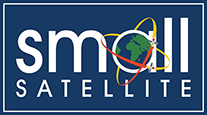Session
Poster Session 1
Location
Salt Palace Convention Center, Salt Lake City, UT
Abstract
Through the University Nanosatellite Program (UNP), the Bronco Space Lab at Cal Poly Pomona presents Continuous Autonomous Detection Enabling Networked Collaboration Explorers of a Space Weather Anomaly Notification System (CADENCE–SWANS): a pathfinder mission demonstrating autonomous space weather monitoring using a low-latency, onboard radiation notification system. The spacecraft conducts coarse energy spectroscopy in real time to detect elevated radiation levels and autonomously generate notifications, including time-stamped records of detection-to-decision latency.
CADENCE–SWANS uses a novel compact, low-SWaP-C coarse particle energy spectrograph, constructed with varied thicknesses of shielding, to estimate particle energies without requiring precise pointing or expensive particle detectors. This approach enables autonomous response to radiation events in Low Earth Orbit, particularly during passes through the South Atlantic Anomaly (SAA), a naturally high-radiation region. The mission aims to validate technologies that support future distributed sensor networks—where spacecraft can detect space weather events and autonomously alert nearby satellites to take protective action. CADENCE–SWANS will also contribute radiation data to help refine SAA maps and improve radiation belt models.
This technology demonstration supports future space weather resilience for defense and commercial systems and is conducted in partnership with the Department of Defense and Air Force Research Laboratory.
Document Type
Event
CADENCE-SWANS: Continuous Autonomous Detection Enabling Networked Collaboration Explorers of a Space Weather Anomaly Notification System
Salt Palace Convention Center, Salt Lake City, UT
Through the University Nanosatellite Program (UNP), the Bronco Space Lab at Cal Poly Pomona presents Continuous Autonomous Detection Enabling Networked Collaboration Explorers of a Space Weather Anomaly Notification System (CADENCE–SWANS): a pathfinder mission demonstrating autonomous space weather monitoring using a low-latency, onboard radiation notification system. The spacecraft conducts coarse energy spectroscopy in real time to detect elevated radiation levels and autonomously generate notifications, including time-stamped records of detection-to-decision latency.
CADENCE–SWANS uses a novel compact, low-SWaP-C coarse particle energy spectrograph, constructed with varied thicknesses of shielding, to estimate particle energies without requiring precise pointing or expensive particle detectors. This approach enables autonomous response to radiation events in Low Earth Orbit, particularly during passes through the South Atlantic Anomaly (SAA), a naturally high-radiation region. The mission aims to validate technologies that support future distributed sensor networks—where spacecraft can detect space weather events and autonomously alert nearby satellites to take protective action. CADENCE–SWANS will also contribute radiation data to help refine SAA maps and improve radiation belt models.
This technology demonstration supports future space weather resilience for defense and commercial systems and is conducted in partnership with the Department of Defense and Air Force Research Laboratory.


